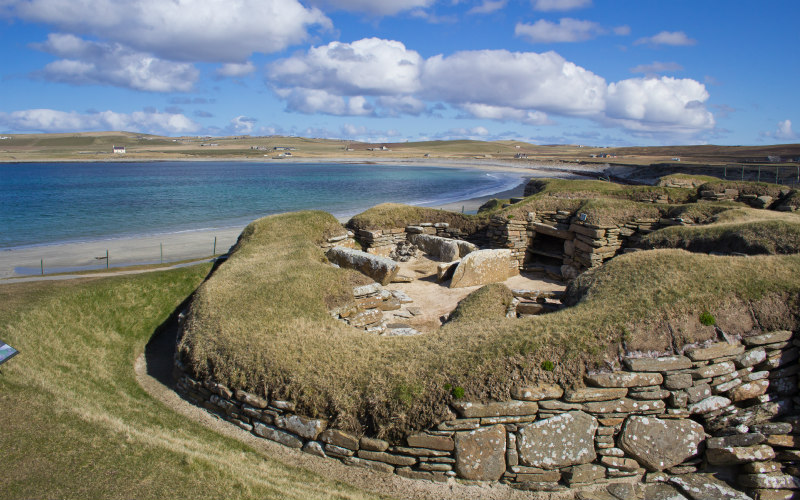
With the recent discovery of Bronze Age carved stone figures in Orkney, the Gold Ring at Loch Lomond reported earlier this year and the Kirkcudbright Viking treasure saga that rumbles on from 2017 the law of who is entitled to what on a treasure find is back in the headlines again.
Who owns the treasure?
Under Scots law the concept of ‘bona vacantia’ (ownerless goods such as artefacts, jewellery and coins) is applied and means that ownership of the treasure on discovery passes to the Crown, not the landowner or the finder. Finds must be reported to the Treasure Trove Unit at the National Museum of Scotland where they are assessed and valued and a reward if applicable is then recommended. It is important to note that objects are claimed based on their archaeological or historical importance rather than the pure financial value, therefore an early bronze age tool could be as important as a highly decorative 18th century gold necklace. The find is firstly considered on whether it is of significant importance and then a panel decides the level of the reward which is based on the current market value of the object.
Who is entitled to the reward?
Scots law provides that the finder of treasure is the person legally entitled to the reward except where the find is part of organised fieldwork (e.g. an archaeological survey ahead of a building development). This contrasts with the position in England and Wales which is governed by the Treasure Act 1996 and entitles both the finder and the landowner to the reward. Furthermore, if the English landowner had not granted permission to the finder to search the land, they are usually also entitled to the finder’s share. This presents obvious difficulties for anyone detecting without permission south of the border. The difference in Scotland is highlighted by the Kirkcudbright Viking treasure case, the finder was reported to have shared the £1.98m reward with the landowner, the Church of Scotland, based on a prior agreement. There is now however a case to demand part payment is now in the Court of Session based on contract rather than Treasure Trove as the finders reward has not been split as the Church believed was intended in terms of their agreement. Although discoveries of the scale of the Kirkcudbright Viking treasure are extremely rare, it would be wise for landowners to reach an agreement with detectorists on profits from any finds in advance of allowing detection activities. Agreements would need to be sufficiently attractive so not to deter the detectorists. Such an approach would result in a closer match to the law in England and Wales.
Access to Land
In Scotland, legislation on land access rights provides the starting point. Under the Land Reform (Scotland) Act 2003 members of the public have a right to access land for commercial purposes or for profit, providing that activity could also be undertaken otherwise than commercially or for profit. An example would be accessing land as a hillwalking guide. However, the 2003 Act and accompanying Outdoor Access Code prohibits access to land where there are crops growing or when there is the intention of taking anything away for profit. Detectorists are therefore entitled to search land without permission from the landowner, but require consent to do so if they intend to remove their finds for profit, such as a reward. As may be expected, further restrictions apply to searches within a scheduled monument area, where permission is also required from Historic Environment Scotland.
Agreement Terms
Any landowners seeking a share of the reward for any treasure found on their land are well advised to enter into a written agreement that provides the detectorists with permission to search and clearly states the agreed split of any reward, they should also consider the time frame of when the activities are to occur, the restoration of the site if a “dig” is to occur, and a confidentiality clause to ensure that the site is not then subjected to a rush of treasure hunters. It would also be wise to ensure that both parties have public liability insurance for their activities in place – the detectorists, to provide cover in the event of any damage or loss caused by their presence or actions while on the land in question, such as leaving a gate open and allowing livestock to escape; and the Landowner, for permitting such access.
For further information and advice please contact a member of the Land and Rural Business team.
